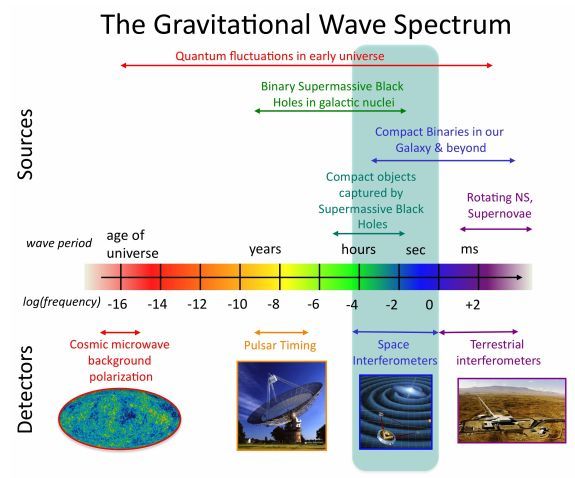A brief history of gravitational waves
by George Smoot.
Gravitational waves were first proposed by Henri Poincare in 1905.
Einstein’s General Relativity cane in 1915. In 1916 he wrote “there are no gravitational waves analogous to light waves” because light waves rely on the existence of negative as well as positive charges but there is no negative component to GR gravity.
But Einstein did not give up on gravitational waves. Some time beforer 1922 he had three different kinds of gravitational waves. These three kinds of waves were baptized by Hermann Weyl as longitudinal-longitudinal, transverse-longitudinal, and transverse-transverse.
Also in 1922 Arthur Eddington wrote an article entitled “The propagation of gravitational waves”. In this paper, Eddington showed that two of
the three types of waves proposed by Einstein actually were spurious.
In 1936 Einstein wrote to his friend, renowned physicist Max Born, “Together with a young collaborator (Rosen), I arrive at the interesting result that gravitational waves do not exist. Criticism of this work by Robinson during peer review roused Einstein to anger, but another physicist, Infeld, confirmed Robinson’s rejections, and convinced Einstein of his error. So still at this stage nobody knew if gravitational waves existed as solutions of the equations of General Relativity.
To prove the existence of a gravitational wave it becomes necessary to detect its effects. One of the difficulties presented by the General Theory of Relativity resides in how to choose the appropriate coordinate system in which one observer may calculate an experimentally measurable quantity, which could, in turn, be compared to a real observation. It took until 1956 to overcome this problem, when Felix A. E. Pirani published a work that became a classic article in the further development of the Theory of Relativity. The work was publoshed in Polish. He showed that the waves would move particles back and forth as they pass by.
Pirani’s 1956 work remained unknown among most physicists because scientists were focusing their attention on whether or not gravitational waves carry energy. This misperception stems from the rather subtle matter of defining energy in General Relativity. Whereas in Special Relativity energy is conserved, in General Relativity energy conservation is not simple to visualize. The interest in the search for gravitational waves began at a meeting occurred in Chapel Hill, North Carolina in 1957. During the discussions, Feynman came up with an argument that convinced most of the audience that waves would move particles back and forth as they pass by. His reasoning is today known as the “sticky bead argument”.
By 1966, Joseph Weber had built the first gravitational wave detector. It consisted of a big aluminum cylinder about 66 cm in diameter and 153 cm in length, weighing 3 tons, hung from wires to isolate it from other influences. The detectors were piezoelectric crystals arranged around the circumference. By 1971, Weber claimed to have succeeded in detecting gravitational waves. Nobody could duplicate his results.
In 1974, Joseph Hooten Taylor and Alan Russell Hulse found an object in the sky (a binary pulsar) that revealed that it radiated gravitational energy, presumably in the form of gravitational waves.
The problem with gravitational waves, as recognized by Einstein ever since he deduced for the first time their existence, is that their effect on matter is almost negligible. Among other reasons, the value of the gravitational constant is very, very small, which makes a possible experimental observation extremely difficult. Furthermore, not all waves are equal, as the source and detector have to be tuned to the same frequency.

It is not known for sure who invented the interferometer method to detect gravitational waves. Robert L. Forward was the first scientist to build an interferometric detector, in 1978.
GEO, VIRGO, LIGO. The ideas for LIGO began in 1975, the official approval was in 1983, construction was completed in 1997. The VIRGO detector was completed in June 2003, and agreed to join LIGO in a collaborative search for gravitational waves in 2007.
Gravitational waves were first observed by Marco Drago at LIGO on 11:50:45 am CET on 14 September 2015.